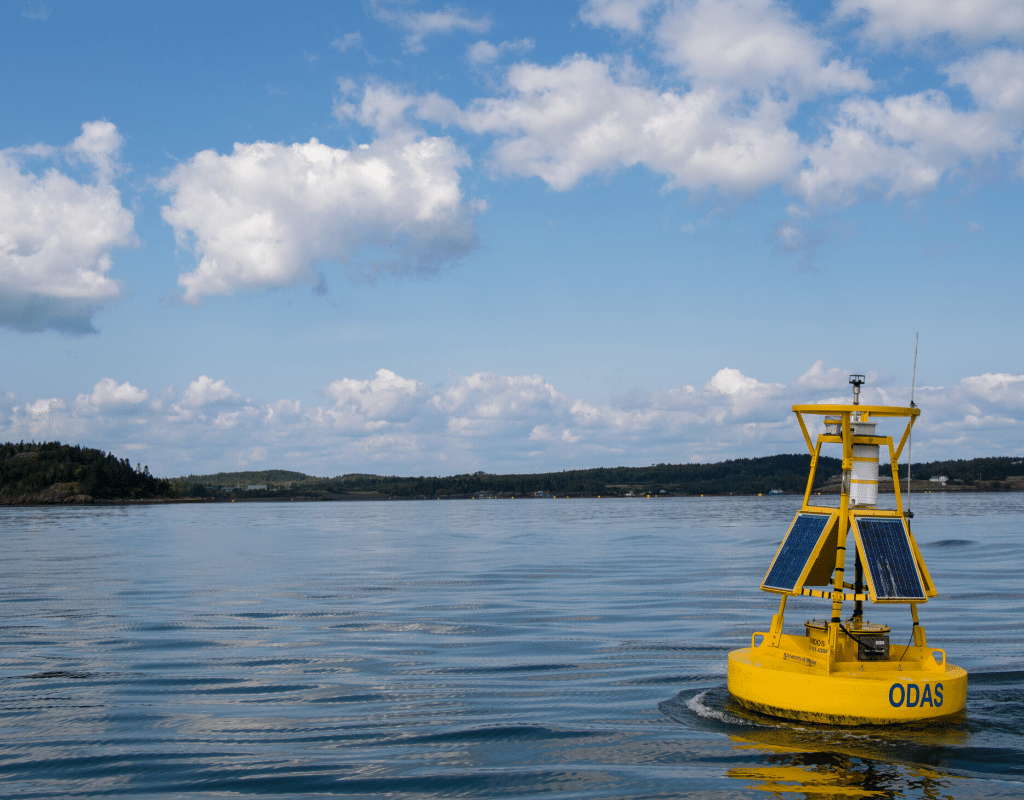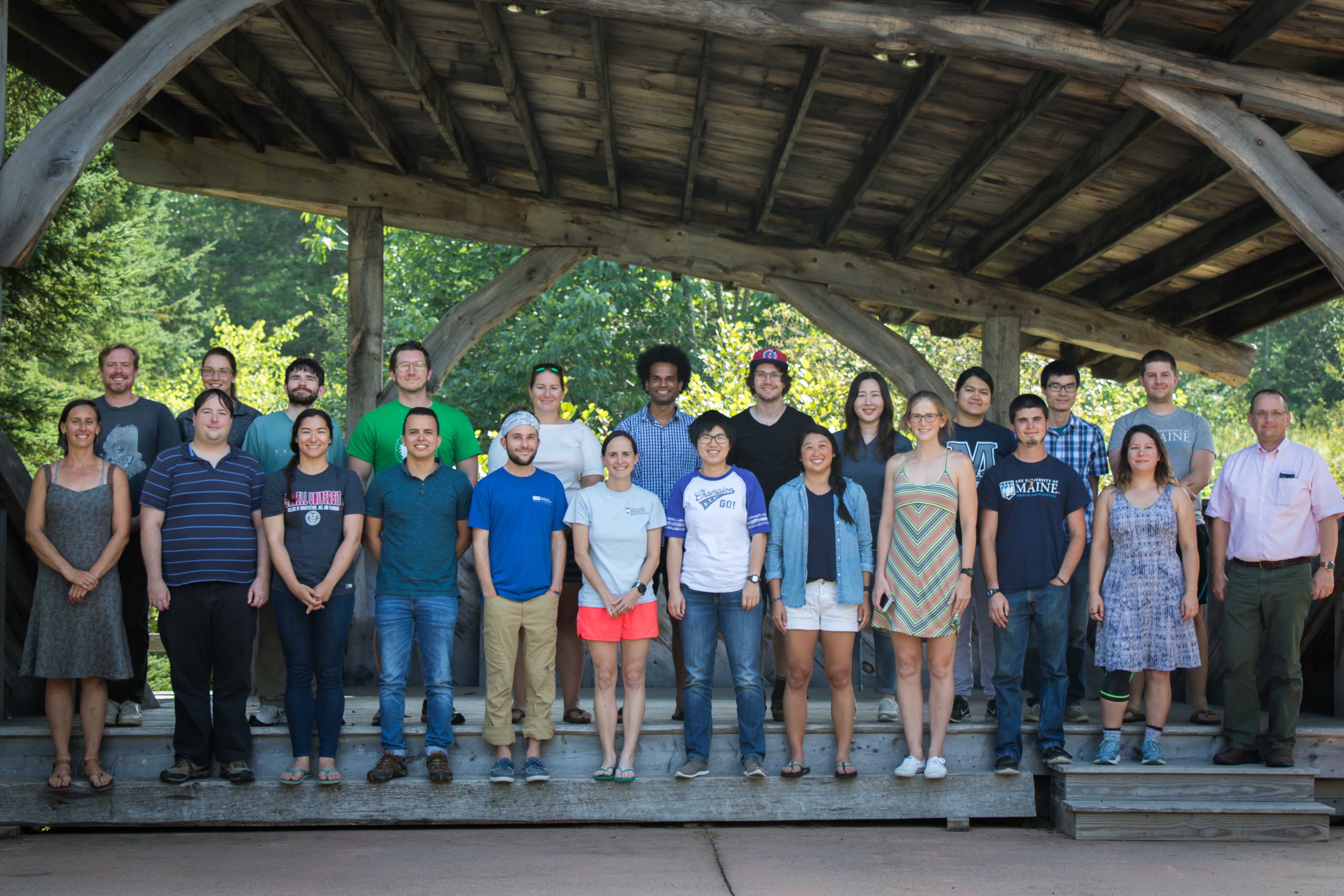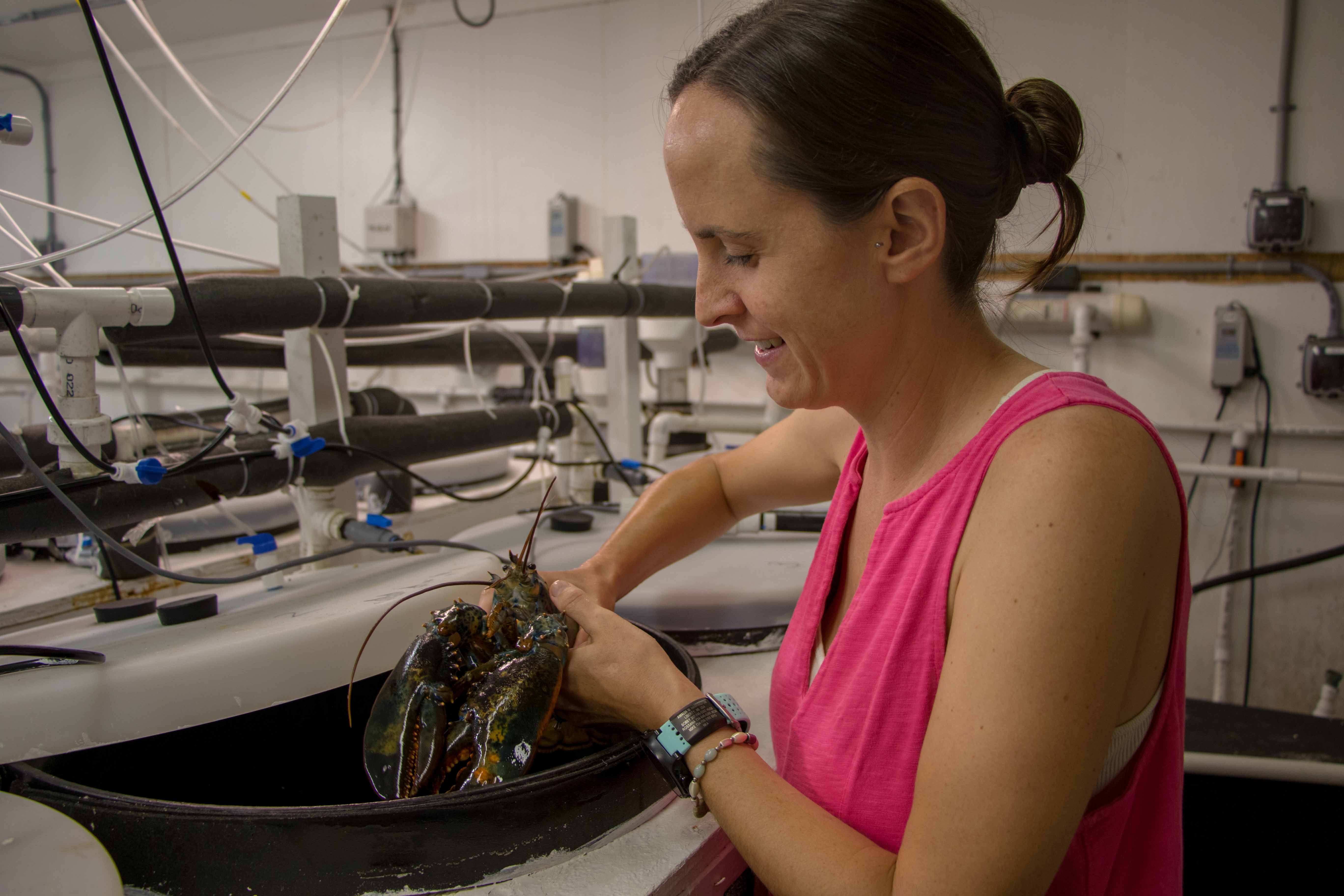
SEANET’s Legacy: The impact of interdisciplinary aquaculture research on the state of Maine
The Sustainable Ecological Aquaculture Network
In January 2020, Maine EPSCoR’s Research Infrastructure Improvement Track 1 project, the Sustainable Ecological Aquaculture Network (SEANET), was officially completed. However, the legacy of the program will live on through the continued interdisciplinary research carried out by institutions such as the Aquaculture Research Institute (ARI), which is SEANET’s named legatee. The project has also been instrumental in moving other partner institutions, such as the Downeast Institute (DEI), the University of New England (UNE), Maine Maritime Academy, Bowdoin College, St. Joseph’s College, and the University of Southern Maine, forward in new interdisciplinary directions.
SEANET was the first multi-year effort to research sustainable ecological aquaculture systems (SEASs) in Maine. The five-year, $20 million grant’s research and development activities facilitated expansion within the state’s aquaculture sector, and the resulting research and Workforce Development (WFD) outcomes have played a key role in informing sustainable practices.
SEANET worked closely with stakeholders through industry-aligned institutions such as the Maine Technology Institute, Maine Aquaculture Innovation Center, Maine Aquaculture Association, Alliance for Maine’s Marine Economy, as well as directly with Maine businesses to assess needs and develop partnerships.
As aquaculture has continued to grow as an industry in the state of Maine, SEANET research and collaborations have played a key role in helping stakeholders and community members better understand how the utilization of sustainable aquaculture may be able to support and benefit the state as a whole. In addition, SEANET has been able to act as a catalyst for future funding and research related to aquaculture and WFD.

Aquaculture Site Selection
As aquaculture expands, it has become increasingly important for coastal communities to use the best possible information in the siting process. The jagged nature of Maine’s coast means there are hundreds of potential estuaries for prospecting. SEANET researchers, like Dr. Damian Brady, an Associate Professor in the UMaine School of Marine Sciences, have taken advantage of advancements in aquaculture and oceanographic science to create a new site selection tool, which uses information from numerical models, oceanographic cruises, satellite imagery, and buoys to help new growers choose sites and diversify Maine’s marine economy.
“Historically, aquaculture has operated on a ‘trial and error’ basis of site selection, where growers pilot a species in a new location to determine whether a particular species will thrive in that environment,” Brady says. “As the industry increases in scale, that type of prospecting becomes inefficient and potentially harmful.” This is one problem the new site selection tool is able to address. The tool has already been successfully used to locate several new farms in Maine’s coastal estuaries.
Sea Vegetable Aquaculture and Food Safety
The Maine Department of Marine Resources (DMR) has identified food safety as a priority research area. For this reason, SEANET researcher, Dr. Carrie Byron, Assistant Professor of Marine Sciences at UNE, worked with Adam St. Gelais, Assistant Director at UNE North and Assistant Research Scientist of Marine Sciences at UNE, Dr. Denise Skonberg, Associate Professor of Food Science at UMaine, and SEANET graduate student, Gretchen Grebe, to collect data regarding the presence of pathogen indicator species of bacteria on farmed sea kelp in Saco Bay. This research was the first of its kind in Maine, and the results indicate that while there are low levels of bacterial indicators and pathogens detected on the surface of farmed sea kelp, they are present. This highlights the need for best practices in food safety, and could impact siting decisions made by growers and resource managers.
Sources and levels of nitrogen were also analyzed in both water and sea vegetable tissue samples, giving a picture of how nitrogen cycles in the kelp growing areas. The results from the nitrogen uptake studies will enable kelp farmers to use the documented nitrogen assimilation values to characterize the environmental benefits of their activities. They will also have a greater understanding of the nutrients available for their farm throughout the growing season.
“Understanding the relationship between what’s in the water versus what’s on the surface of kelp is helping to create structure, predictability, and safety for siting and operating kelp farms, in what may become a sizable industry in the state,” Skonberg says.
The Warming Gulf of Maine
Another challenge facing the industry is the changing climate. Current predictions foresee continued warming in the Gulf of Maine. Even slight temperature increases could have a dramatic effect on Maine’s seaweed industry. For this reason, SEANET researcher, Dr. Susan Brawley, a Professor of Marine Sciences at UMaine, led a team that investigated seaweed varietals that could withstand such change. Through field surveys, lab-based thermal acclimation experiments, and other tests in aquaculture research mesocosms and sea farms, researchers found that the kelp Alaria esculenta (or “winged kelp”) demonstrates thermal tolerance and holds promise as a candidate for future expansion within the Maine seaweed industry.
The effects of increasing ocean temperatures and ocean acidification (OA) on calciferous invertebrates were studied by Dr. Heather Hamlin, an Associate Professor of Marine Sciences at UMaine, and her team. American lobsters were used as a model organism in the experiment. The lobsters were exposed to acidified environments and temperature ramping. Results suggest that lobsters may have a significantly reduced ability to deal with thermal stress under OA conditions, which could be particularly problematic for this species in the face of climate change. “This could also indicate a higher susceptibility to other stressors, such as disease,” Hamlin explains.
This work was repeated with oysters, and preliminary results indicate that oysters may also be more susceptible to diseases with increased ocean acidification and rising temperatures. Hamlin and her team had a meeting with the Department of Marine Resources (DMR) and their lobster sampling group in order to discuss the risks identified through their research. As a result, rapid response (through the funding and support of additional research) to climate change related threats has been enabled. Both lobstering and oyster aquaculture are important to the Maine marketplace and must be protected if they are to continue. Farmers and scientists must work together to find solutions to protect these species from the impacts of climate change.

A Potential for Artic Surf Clams
Dr. Brian Beal and his team at the Downeast Institute (DEI) have investigated how to best diversify the shellfish culture candidates produced in Maine and the Northeastern U.S. This will increase the quality and quantity of cultured shellfish available to the public. Beal and his team examined the hatchery, nursery, and grow-out phases of the Arctic surf clam, Mactromeris polynyma, in eastern Maine. Another project, conducted by St. Joseph’s College, evaluated the Atlantic surf clam, Spisula solidissima, as a potential species worthy of introduction into the current mix of shellfish cultured in Southern Maine. In addition, project researchers initiated laboratory and field trials with a new culture candidate, the Atlantic razor clam, Ensis leei.
Field trials with the Arctic surf clam and Atlantic razor clam were completed, and researchers were able to improve their survival rates from less than 20 percent to more than 90 percent. If further research is able to repeat these results, then a new cultured shellfish species may be introduced to Maine. Project personnel were also able to successfully grow Atlantic razor clams in a hatchery. St. Joseph’s College researchers gave the harvested Atlantic surf clams to local restaurants in the Portland, Maine area and gathered feedback via interviews.
STEM Education and the Future of Maine’s Workforce
A strong Science, Technology, Engineering, and Mathematics (STEM) workforce is critical for Maine’s economic future. Maine EPSCoR and the University of Maine Cooperative Extension 4-H’s Summer of Science (SoS) program promotes positive youth STEM and Workforce Development (WFD). College interns and teen teachers deliver STEM-related activities, experiments, and lessons to Maine youth at more than 50 food sites throughout the state. Teaching these lessons to younger students builds skills and increases the understanding of the teens and college interns. This program has been nationally recognized as a scalable model, presented at various national conferences, and has been published in the Journal of STEM Outreach.
Maine EPSCoR and the UMaine Cooperative Extension 4-H also created four curricula toolkits that can be used by educators, scout groups, summer camps, and afterschool programs. Each of the toolkits provides all the materials necessary for the delivery of hands-on learning activities for students. Educators throughout the state can borrow these assembled toolkits from their local county Cooperative Extension office. Two of the curricula toolkits have been nationally peer-reviewed and certified and are now being used throughout the nation. Combined, SEANET STEM education and WFD programs directly supported over 30,000 students per year in Maine.
SEANET’s Continuing Legacy
The research and outcomes described above are just a few examples of the way SEANET has directly impacted the state and influenced future research. While SEANET’s projects are complete, project personnel are enthusiastic about the implementation of key knowledge and practice, originating from the SEANET grant, in the developing aquaculture sector, and believe that Maine communities (and the environment itself) will benefit from the knowledge and activities shared.
SEANET’s principal investigator, Dr. Kody Varahramyan, who is the Vice President for Research and Dean of the Graduate School at UMaine, believes the project will continue to positively impact Maine and beyond for many years.
“The ability to advance collaborative aquaculture science at this level of excellence did not exist before SEANET, but will continue well beyond the life of the grant,” says Varahramyan.
